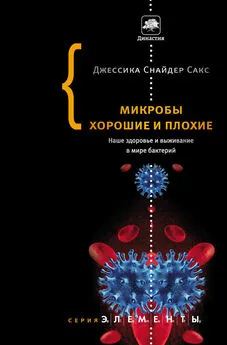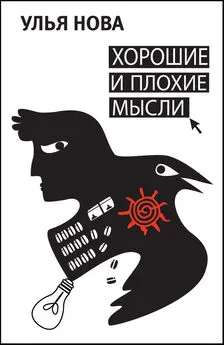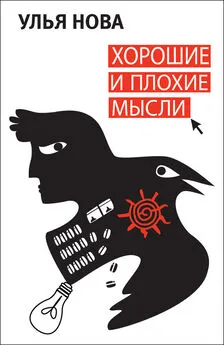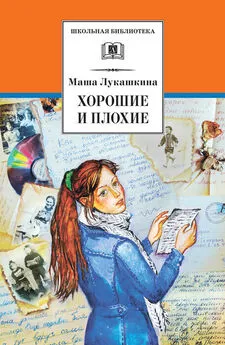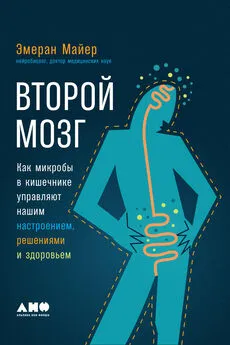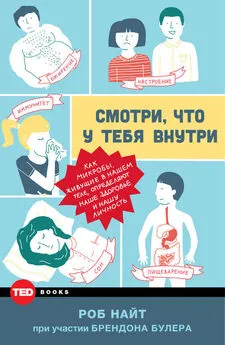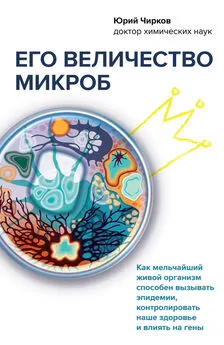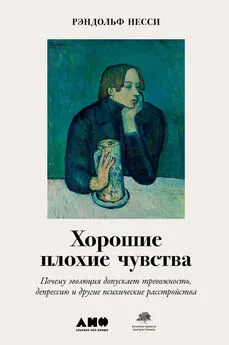Джессика Сакс - Микробы хорошие и плохие. Наше здоровье и выживание в мире бактерий
- Название:Микробы хорошие и плохие. Наше здоровье и выживание в мире бактерий
- Автор:
- Жанр:
- Издательство:Corpus
- Год:2015
- Город:Москва
- ISBN:978-5-17-093708-0
- Рейтинг:
- Избранное:Добавить в избранное
-
Отзывы:
-
Ваша оценка:
Джессика Сакс - Микробы хорошие и плохие. Наше здоровье и выживание в мире бактерий краткое содержание
Рассказывая о том, что в нашей войне с микробами пошло совсем не так, как надо, Джессика Снайдер Сакс раскрывает перед читателями складывающиеся сегодня представления о симбиотических отношениях человеческого организма и населяющих его микробов, число которых, кстати, превосходит число наших собственных клеток в девять раз! Кроме того, автор этой книги подает нам надежду на то, что в будущем люди научатся создавать и использовать антибиотики более благоразумно, и даже на то, что когда-нибудь мы сможем заменить противо-бактериальные и дезинфицирующие средства бактериальными, каждое из которых будет специально разработано так, чтобы обеспечивать наилучшую заботу о нашем здоровье.
Микробы хорошие и плохие. Наше здоровье и выживание в мире бактерий - читать онлайн бесплатно полную версию (весь текст целиком)
Интервал:
Закладка:
38 L. Clifford McDonald et al., “An Epidemic, Toxin Gene-Variant Strain of Clostridium difficile”, New England Journal of Medicine 353 (2005), 2433–2441.
39 Carlene Muto et al., “A Large Outbreak of Clostridium difficile – Associated Disease with an Unexpected Proportion of Deaths and Colectomies at a Teaching Hospital Following Increased Fluoroquinolone Use”, Infection Control Hospital Epidemiology 3 (2005), 273–280.
40 Luis Fabregas, “Superbug Infecting Area Patients”, Pittsburgh Tribune-Review , October 29, 2005.
41 “Severe Clostridium difficile Associated Disease in Populations Previously at Low Risk – Four States, 2005”, Morbidity and Mortality Weekly Report, December 2, 2005.
42 Yves Gillet et al., “Association Between Staphylococcus aureus Strains Carrying Gene for Panton-Valentine Leukocidin and Highly Lethal Necrotising Pneumonia in Young Immunocompetent Patients”, Lancet 359 (2002), 753–759.
43 Айзек Старр (Isaac Starr), в 1918 г. – студент-медик третьего курса Пенсильванского университета, цитируется по статье: “Influenza in 1918: Recollection of the Epidemic in Philadelphia”, Annals of Internal Medicine 145 (2006), 138–140.
44 Betsy Herold et al., “Community-Acquired Methicillin-Resistant Staphylococcus aureus in Children with No Identified Predisposing Risk”, Journal of the American Medical Association 279 (1998), 593–598.
45 “Four Pediatric Deaths from Community-Acquired Methicillin-Resistant Staphylococcus aureus – Minnesota and North Dakota, 1997–1999”, Morbidity and Mortality Weekly Report, August 20, 1999, 707–710.
46 Carlos Sattler et al., “Prospective Comparison of Risk Factors and Demographic and Clinical Characteristics of Community-Acquired, Methicillin-Resistant versus Methicillin-Susceptible Staphylococcus aureus Infection in Children”, Pediatric Infectious Disease Journal 21 (2002), 910–916.
47 Sophia Kazakova et al., “A Clone of Methicillin-Resistant Staphylococcus aureus Among Professional Football Players”, New England Journal of Medicine 352 (2005), 468–475.
48 D. A. Robinson et al., “Re-emergence of Early Pandemic Staphylococcus aureus as a Community-Acquired Methicillin-Resistant Clone”, Lancet 365 (2005), 1256–1258.
49 Sheldon Kaplan et al., “Three-year Surveillance of Community-Acquired Staphylococcus aureus Infections in Children”, Clinical Infectious Diseases 40 (2005), 1785–1791; M. D. King et al., “Emergence of Community-Acquired Methicillin-Resistant Staphylococcus aureus USA 30 °Clone as the Predominant Cause of Skin and Soft-Tissue Infections”, Annals of Internal Medicine 144 (2006), 309–317; Gregory Moran et al, “Methicillin-Resistant S. aureus Infections Among Patients in the Emergency Department”, New England Journal of Medicine 355 (2006), 666–674.
50 Tsutomu Watanabe et al., “Episome-Mediated Transfer of Drug Resistance in Enterobacteriaceae X”, Journal of Bacteriology 92 (1966), 477–486.
51 Ellen C. Moorhouse, “Transferable Drug Resistance in Enterobacteria Isolated from Urban Infants”, British Medical Journal 2 (1969), 405.
52 K. B. Linton et al., “Antibiotic Resistance and Transmissible R-factors in the Intestinal Coliform Flora of Healthy Adults and Children in an Urban and Rural Community”, Journal of Hygiene 70 (1972), 99-104.
53 D. V. Sompolinsky et al., “Microbiological Changes in the Human Fecal Flora Following the Administration of Tetracyclines and Chloramphenicol”, American Journal ofProctology 18 (1967), 471–478.
54 Stuart Levy et al., “High Frequency of Antimicrobial Resistance in Human Fecal Flora”, Antimicrobial Agents and Chemotherapy 32 (1988), 1801–1806.
55 Интервью, взятое автором у Стюарта Ливи в июне 2006 г.
56 N. B. Shoemaker, H. Hayes, A. A. Salvers, “Evidence for Extensive Resistance Gene Transfer Among Bacteroides spp. and Among Bacteroides and Other Genera in the Human Colon”, Applied and Environmental Microbiology 67 (February 2001), 561–568.
57 Видовое название thetaiotaomicron, которое многие бактериологи считают одним из самых ужасных, представляет собой комбинацию трех греческих букв (тета, йота и омикрон), которые привиделись румынскому бактериологу Арканджело Дистазо в 1912 г., когда он, глядя в микроскоп, увидел нагромождение коротких и длинных палочек, выросших в культуре открытого им вида. См.: A. Distaso, Zentralblatt für Bakteriologie, Parasitenkunde, Infektionskrankheiten, und Hygiene. Abteilung I. 62 (1912) 433468. “О чем история умалчивает, – добавляет Абигайль Сэльерс, – это не было ли придуманное им название вдохновлено посещением ближайшей пивной”. Большинство микробиологов, работающих с этим видом, не без оснований называют его так лишь в своих научных трудах, а во всех остальных случаях используют сокращенное наименование B. theta.
58 Laura McMurry et al., “Triclosan Targets Lipid Synthesis”, Nature 394 (1998), 531-5-32; S. P. Cohen, H. Hachler, S. B. Levy, “Genetic and Functional Analysis of the Multiple Antibiotic Resistant (mar) Locus in Escherichia coli”, Journal of Bacteriology 175 (1993), 14841492; M. C. Moken, L. M. McMurry, S. B. Levy, “Selection of Multiple Antibiotic Resistant (mar) Mutants of Escherichia coli by Using the Disinfectant Pine Oil”, Antimicrobial Agents and Chemotherapy 41 (1997), 2770–2772; L. M. McMurry, M. Oethmger, S. B. Levy, “Overexpression of marA, soxS, or acrAB Produces Resistance to Triclosan in Esherichia coli”, FEMS Microbiology Letters 166 (1998), 305–309.
59 Rolf Halden et al., “Co-occurrence of Triclocarban and Triclosan in U. S. Water Resources”, Environmental Science and Technology 39 (2005), 1420–1426; Jochen Heidler et al., “Partitioning, Persistence and Accumulation in Digested Sludge of the Topical Antiseptic Triclocarban During Wastewater Treatment”, Environmental Science and Technology 40 (2006), 3634–3639.
60 Holli Lancaster et al., “Prevalence and Identification of Tetracycline-Resistant Oral Bacteria in Children Not Receiving Antibiotic Therapy”, FEMS Microbiology Letters 228 (2003), 99-104.
61 Идея, что антибиотики возникли в ходе эволюции, по крайней мере отчасти как сигнальные вещества, принадлежит микробиологу Джулиану Дэвису (Julian Davies) из Университета Британской Колумбии в Ванкувере. Основополагающая работа его лаборатории на эту тему: Been Goh et al., “Transcriptional Modulation of Bacterial Gene Expression by Subinhibitory Concentrations of Antibiotics”, Proceedings of the National Academy of Sciences 99 (2002), 17025-17030.
62 C. G. Marshall et al., “Glycopeptide Antibiotic Resistance Genes in Glycopeptide-Producing Organisms”, Antimicrobial Agents and Chemotherapy 42 (1998), 2215–2220.
63 Химическое название синерцида – хинупристин-дальфопристин, тигацила – тигециклин, кубицина – даптомицин.
64 Телитромицин известен также под фирменным названием “кетек” (Ketek), а линезолид – под названием “зивокс” (Zyvox).
65 Vanessa D’Costa et al., “Sampling the Antibiotic Resistome”, Science 311 (2006), 374–377.
66 “Superbugs Abound in Soil”, www.nature.com / news / 2006/ 060119/full / news060116-10.html.
67 William Laurence, “Wonder Drug Aureomycin Found to Spur Growth 50 Percent”, New York Times, April 10, 1950, 1.
68 Notes on Science, New York Times, May 20, 1950, E9.
69 Animal Health Institute, “Antibiotic Use in Animals Rises in 2004”, пресс-релиз от 27 июня 2005 г.
70 “Hogging It! Estimates of Antimicrobial Abuse in Livestock”, Union of Concerned Scientists, January 2001, executive summary, xiii, www.ucsusa.org/food_and_agriculture/science_and_impacts/impacts _industrial_agriculture / hogging-it-estimates-of.html.
71 Animal Health Institute, “Antibiotic Use in Animals Rises in 2004”, пресс-релиз от 27 июня 2005 г.
72 Animal Health Institute, Active Antibacterial Ingredients Sold byAHI Members, обзор за 2002–2004 гг., 27 июня 2005 г.
73 Amy Chapin et al., “Airborne Multidrug-Resistant Bacteria Isolated from a Concentrated Swine Feeding Operation”, Environmental Health Perspectives 113 (2005), 137; M. P. Schlusener, K. Bester,
“Persistence of Antibiotics Such As Macrolides, Tiamulin and Salinomycin in Soil”, Environmental Pollution 143 (2006), 565–571; J. M. Cha et al., “Rapid Analysis of Trace Levels of Antibiotic Polyether Ionophores in Surface Water by Solid-Phase Extraction”, Journal of Chromatography 1065 (2005), 187–198.
74 Morten Helms et al., “Excess Mortality Associated with Antimicrobial Drug-Resistant Salmonella typhimurium”, Emerging Infectious Diseases 8 (2002), 490–495; J. K. Varma et al., “Antimicrobial Resistance in Salmonella Is Associated with Increased Hospitalizations”, National Antibiotic Resistance Monitoring System 1996–2000, International Conference on Emerging Infectious Diseases, 2002.
75 H. A. Elder et al., “Human Studies to Measure the Effect of Antibiotic Residues”, Veterinary and Human Toxicology 35 (1996), suppl. 1, 31–36.
76 Jeffrey Lejeune, Nicholas Christie, “Microbiological Quality of Ground Beef from Conventionally Reared Cattle and ‘Raised Without Antibiotics’ Label Claims”, Journal of Food Protection, 67 (2004), 1433–1437.
77 M. Meyer et al., “Occurrence of Antibiotics in Surface and Ground Water near Confined Animal Feeding Operations and Waste Water Treatment Plants Using Radioimmunoassay and Liquid Chromatography / Electrospray Mass Spectrometry”, U. S. Geological Survey, Raleigh, N. C.
78 Amee Manges et al., “Widespread Distribution of Urinary Tract Infections Caused by a Multidrug-Resistant Escerichia coli Clonal Group”, New England Journal of Medicine 345 (2001), 1007–1013;
“An Epidemic of Urinary Tract Infections?” New England Journal of Medicine 345 (2001), 1055–1057.
Читать дальшеИнтервал:
Закладка:
